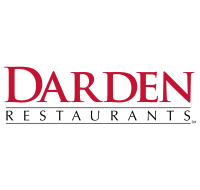
Darden Restaurants Inc
NYSE:DRI

Darden Restaurants Inc
Darden Restaurants Inc., a prominent player in the American dining landscape, has crafted a robust portfolio comprising some of the nation's beloved casual dining brands. It owns and operates well-known restaurant chains such as Olive Garden, LongHorn Steakhouse, and The Capital Grille, among others. Darden's story is one of strategic brand management and leveraging consumer loyalty through differentiated dining experiences. The company has honed its expertise in serving diverse culinary preferences, appealing to both casual diners and patrons seeking upscale steakhouse offerings. It ensures that each brand retains its unique identity while benefiting from the collective strength of Darden’s corporate resources, which include supply chain efficiencies, real estate acumen, and marketing prowess.
The path to profitability for Darden is paved by a meticulously designed operating model that captures value across every facet of the dining experience. Revenue streams flow from the consistent turnover of high-volume restaurant traffic, enhanced by an emphasis on customer engagement and satisfaction. Darden invests heavily in brand-specific marketing to cultivate strong brand loyalty and repeat visits. The average guest check and operational efficiency are critical metrics, closely monitored to optimize performance across their vast network of locations. By maintaining a disciplined approach to cost management while investing in front-line innovation, such as digital ordering and delivery platforms, Darden ensures that it constantly adapts to shifting consumer preferences without losing its competitive edge in the bustling restaurant industry.

















































 You don't have any saved screeners yet
You don't have any saved screeners yet
